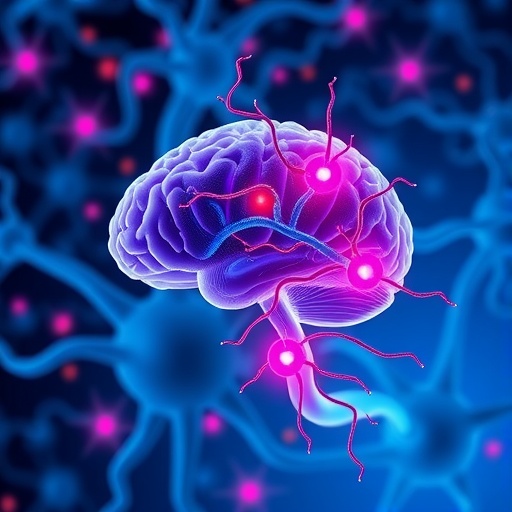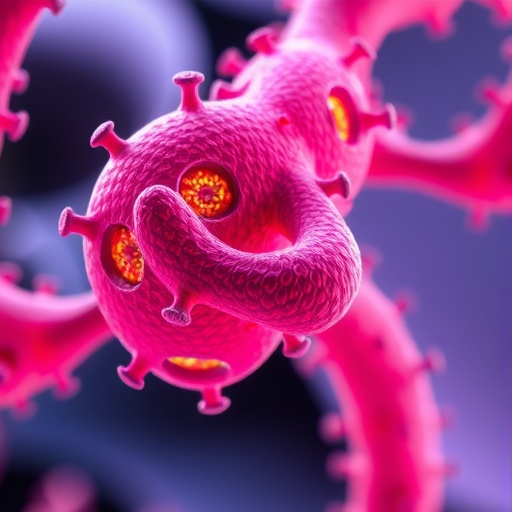
The brain’s involvement in regulating blood glucose has traditionally been associated with emergency responses such as fasting or hypoglycemia, where rapid adjustments are necessary to maintain survival. However, this conventional understanding overlooks the nuanced and continuous role the brain plays in the steady regulation of blood sugar under normal, day-to-day conditions. Recent groundbreaking research from the University of Michigan, published in Molecular Metabolism, challenges this paradigm by uncovering how a specialized subset of neurons in the hypothalamus governs glucose homeostasis during routine physiological states.
Central to this discovery are neurons located within the ventromedial nucleus of the hypothalamus (VMH), a brain region long recognized for regulating hunger, fear, thermoregulation, and reproductive behaviors. Specifically, the study zeroes in on neurons expressing the cholecystokinin B receptor (Cckbr). These VMH^Cckbr neurons demonstrate a pivotal role not in crisis management but in maintaining baseline glucose levels, especially during the nocturnal fasting phase between the last meal and waking hours—a time frame critical for preventing hypoglycemia overnight.
To elucidate the function of VMH^Cckbr neurons, the research team employed genetically engineered mouse models in which these neurons could be selectively inactivated. Monitoring glucose dynamics in these models revealed a compelling finding: inactivation disrupted normal glucose maintenance during fasting. This indicates that VMH^Cckbr neurons send signals which subsequently prompt peripheral tissues to sustain blood glucose levels. Intriguingly, the mechanism by which these neurons operate involves stimulating lipolysis—the metabolic breakdown of fats—thereby releasing glycerol, a gluconeogenic substrate essential for glucose production. This biochemical pathway highlights a sophisticated brain-to-body communication network that supports metabolic equilibrium outside emergency scenarios.
.adsslot_rje0y7NzcP{width:728px !important;height:90px !important;}
@media(max-width:1199px){ .adsslot_rje0y7NzcP{width:468px !important;height:60px !important;}
}
@media(max-width:767px){ .adsslot_rje0y7NzcP{width:320px !important;height:50px !important;}
}
ADVERTISEMENT
Activating the VMH^Cckbr neurons caused an elevation in circulating glycerol in mice, further corroborating their role in modulating lipolysis. This glut of glycerol feeds the liver’s gluconeogenesis process, effectively ensuring a steady supply of glucose to vital organs during fasting. Such continuous microscopic modulation stands in contrast to the prevailing belief of a binary on/off regulatory system, which postulated that neuronal influence on glucose is predominantly reactive and emergency-driven rather than proactive and preventative.
These insights hold profound implications for understanding metabolic disorders like prediabetes and type 2 diabetes. Patients with prediabetes experience unexplained increases in nocturnal lipolysis, a phenomenon that may stem from hyperactivity of VMH^Cckbr neurons. Overactivation of this circuit could lead to excessive glucose production, precipitating elevated blood sugar levels that characterize diabetes onset. By pinpointing this neural pathway, researchers have opened avenues for targeted interventions that could recalibrate excessive gluconeogenic signaling, potentially mitigating early metabolic dysregulation.
In addition, the study underscores the multifaceted nature of hypothalamic control over metabolism. While VMH^Cckbr neurons regulate lipolysis, not all neuron types in the ventromedial nucleus have been linked to this metabolic branch, indicating the presence of distinct populations orchestrating varying aspects of glucose regulation. This multiplicity allows the brain to fine-tune metabolic responses based on context, such as feeding, fasting, and stress, thus maintaining homeostasis through a balanced integration of neural signals.
The researchers emphasize that glucose regulation is not a simplistic, all-or-nothing neural event but rather a harmonious interplay of diverse neuron clusters whose activity fluctuates with physiological needs. Under stress or emergency, this network intensifies its efforts, but during everyday metabolic fluxes, it imbues the system with flexibility and fine control. This paradigm shift invites a reevaluation of neurological mechanisms underlying metabolic diseases, encouraging exploration beyond traditional endocrine models.
Future work aims to dissect how these neurons collectively coordinate to manage the body’s glucose economy across varying conditions. By mapping the intricate neural circuits within the ventromedial hypothalamus and their systemic targets, scientists aspire to unveil comprehensive regulatory frameworks governing metabolism. Moreover, understanding the crosstalk between the central nervous system and peripheral organs like the liver and pancreas will deepen knowledge of integrated metabolic control.
This investigation, spearheaded by members of the Caswell Diabetes Institute at the University of Michigan, marks a milestone in neuroscience and metabolism research. It melds sophisticated genetic, physiological, and biochemical approaches to illuminate previously cryptic aspects of neuroendocrinology. The team’s discoveries underscore the brain’s proactive stewardship over glucose balance, challenging preconceived notions and hinting at novel therapeutic strategies for diabetes, one of the world’s most pressing health concerns.
Ongoing inquiries will explore how modulation of VMH^Cckbr neuron activity influences metabolic outcomes in different physiological and pathological states. Additionally, determining how environmental and lifestyle factors intersect with this neuronal circuitry may unveil new preventive measures for metabolic disorders. The fine-grained understanding achieved here sets a precedent for unraveling other brain-controlled metabolic pathways and their role in systemic health.
In conclusion, the University of Michigan study redefines the role of the hypothalamus from merely an emergency responder to a vigilant regulator of glucose homeostasis during everyday life. Through its control over lipolysis and provision of gluconeogenic substrates, the VMH^Cckbr neuronal population ensures a steady glucose supply during fasting, thereby averting hypoglycemia and maintaining metabolic harmony. This nuanced regulation offers fresh perspectives on the neural basis of metabolic diseases and paves the way for innovative interventions tailored to the brain’s complex control of energy balance.
Subject of Research: Animals
Article Title: Control of physiologic glucose homeostasis via hypothalamic modulation of gluconeogenic substrate availability
News Publication Date: 18-Jul-2025
Web References:
https://www.sciencedirect.com/science/article/pii/S2212877825001231
http://dx.doi.org/10.1016/j.molmet.2025.102216
References:
“Control of physiologic glucose homeostasis via hypothalamic modulation of gluconeogenic substrate availability,” Molecular Metabolism, DOI: 10.1016/j.molmet.2025.102216
Image Credits: Angel Ren
Keywords: Health and medicine
Tags: brain glucose regulationcholecystokinin B receptor roledaily blood sugar controlgenetically engineered mouse modelsglucose homeostasis mechanismshypoglycemia prevention strategiesmetabolic research findingsneurons in hypothalamusnocturnal fasting impactphysiological glucose levelsUniversity of Michigan studyventromedial nucleus functions





